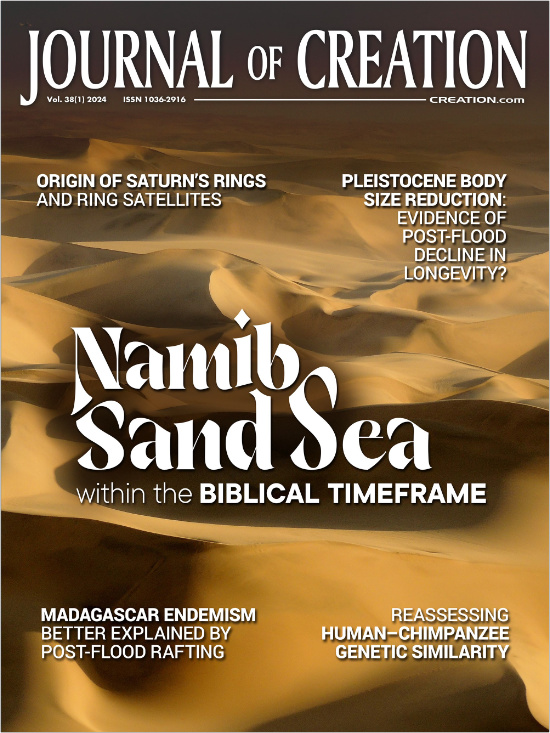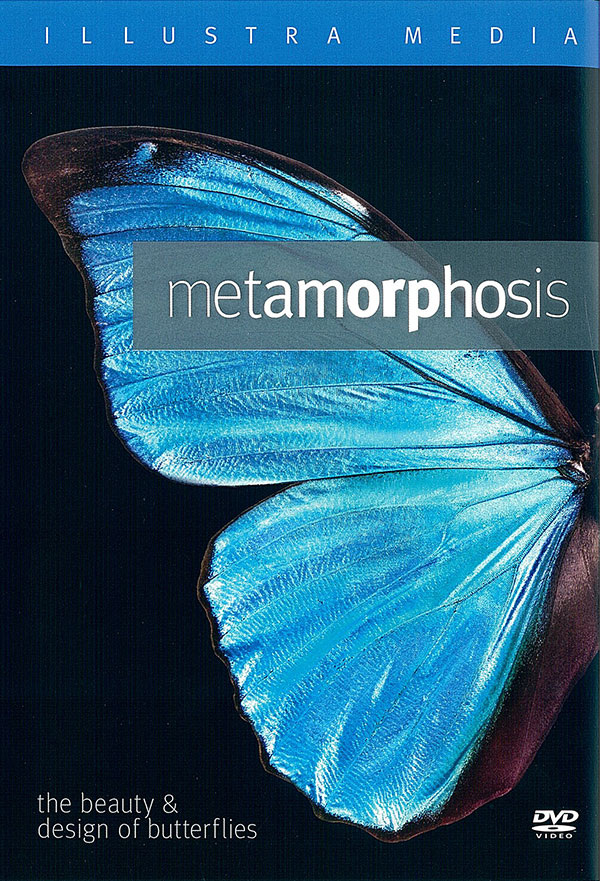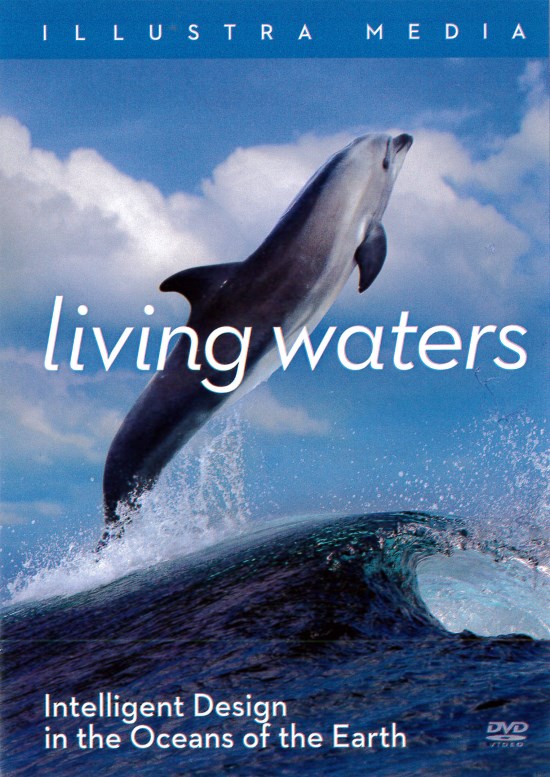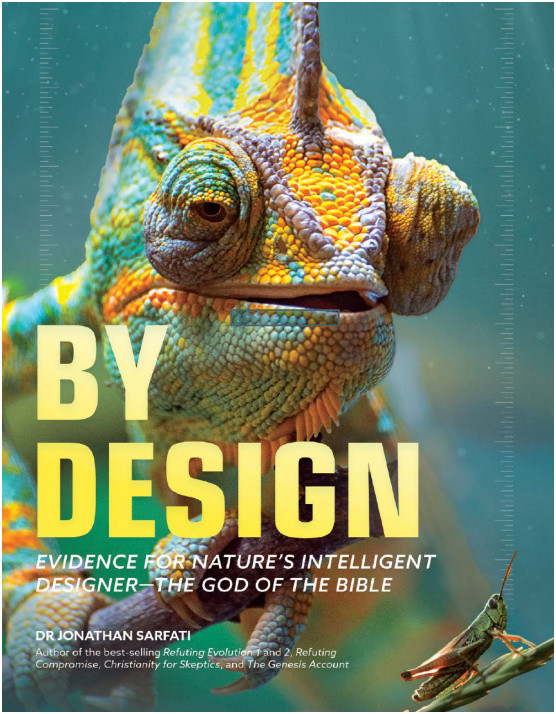Journal of Creation 38(1):36–39, April 2024
Browse our latest digital issue Subscribe
Supernaturally designed navigators
A review of: Supernavigators: Exploring the wonder of how animals find their way
(originally published in Great Britain as Incredible Journeys) by David Barrie
The Experiment, New York, 2019
I believe that one of the most compelling pieces of evidence of the intelligent design of animals is the ability of many of them to perform amazing feats of navigation. If you think there are only a few examples of such behaviour among living animals, this book will completely extinguish such a notion.
Barrie, a navigator himself, spent four years travelling around the world, witnessing research scientists in their efforts to decipher the mysterious navigational abilities of numerous different kinds of animals. He also consulted the biological literature (I counted more than 350 sources in his endnotes), and interviewed dozens of researchers involved in investigating these phenomena. So, if you are looking for a great overview of animal migration, this book is the place to start.
Huge variety of navigation systems
It contains a wealth of information that any biology teacher, like me, can include in lectures when covering the various groups of animals. Each day’s lesson can be a time of wonder by including one of the mysteries or discoveries discussed herein.
I counted about 62 different kinds of organisms, the amazing abilities of which were described within these pages. They span the gamut, from bacteria to protozoans to slime moulds to round worms to cnidarians (jellyfish, corals, etc.) to mollusks to insects to crustaceans to fish to amphibians to reptiles to birds (Barrie claims that about half of all bird species migrate, p. 77) to mammals to humans. There is also a representative of a group not mentioned, arachnids. The spider, Leucorchestris arenicola, wanders in the night looking for a female and then returns to his burrow by a direct route in the dark, a round trip of 800 metres.1
Some kinds of organisms are only briefly mentioned, while a good number of others are dealt with more thoroughly. In addition, each chapter ends with an example of animal navigation, which he includes to “help to entertain the reader, while also revealing how many mysteries remain to be solved” (p. xii). The book is written for the general reader, without a lot of technical jargon or details. Supernavigators includes a bibliography and an index. Finally, it ends with an interesting interview with the author.
Here is a brief sampling of some ‘supernavigators’:
- The bar-tailed godwit, a land bird that cannot soar or swim, flies non-stop from Alaska to New Zealand (p. 53).
- The young of the European cuckoo flies unaccompanied from Europe to Africa to join its parents, which have left earlier (p. 78).
- The monarch butterfly is described by Barrie as having an “extraordinarily complex and sophisticated system …” (p. 134).
- The ancient murrelet, a seabird, is the only bird known to migrate east to west across the Pacific Ocean—why it does so is a “mystery, as indeed is its method of navigation” (p. 142).
- The bogong moth uses “both visual and magnetic ‘snapshots’ …” (p. 154), and also orients with “the help of the Milky Way. Wow!” (p. 304).
- Three-striped poison frogs, when transported 800 metres from their homes:
“… were not only able to find their way back, but followed quite direct routes, even though their journeys sometimes lasted several days. Given that the rainforest is such a cluttered environment, full of noises, smells, and obstacles, and offering little access to the sky, it is very hard to understand how they do this” (p. 230).
Evolutionary storytelling
Sadly, Barrie gives the credit for these wonders to evolution, so I cannot recommend this book for children, but the great majority of the book is devoted to the navigational behaviours of animals and the experiments that have been conducted to explain them.
Let us consider some of Barrie’s statements that relate to the question of origins:
“But whether you are an arctic tern flying from one end of the earth to the other, or a desert ant dashing back to its nest with a dead fly in its jaws, you must be able to find your way. It is quite simply a matter of life and death” (p. ix).
So, if an animal is not successful in its migration, there will be no next generation to make necessary corrections. How could such a complex behaviour have slowly evolved over many generations? A partially evolved navigational system could be fatal to its owner.
Barrie does not get involved in evolutionary speculations about the origin of animal navigation. He apparently accepts evolution as scientific dogma, and therefore navigational systems must be the result of it, regardless of how counterintuitive that would seem. He recounts the evolution of life from simple to complex, and, since navigation is present to some degree in microscopic life, he concludes that this behaviour appeared quite early in evolution: “the first life forms that emerged on our planet were very small indeed, and they were the pioneers of navigation” (p. 5). Barrie then goes on to describe navigation in some simple lifeforms. It seems he assumes that this behaviour evolved, along with the lifeforms that possessed it, from simple to more complex.
However, there is an enormous unbridgeable gap between prokaryotes (bacteria) and simple eukaryotes (like choanoflagellates).2 There are no known intermediates between these major groups in nature nor in the fossil record. In addition, evolutionists don’t believe that sponges (the possessors of choanocyte cells which resemble choanoflagellates) have evolved into any other kind of animal.3
When discussing how some animals can navigate by the sun, Barrie commented, “you should never underestimate the power of natural selection, especially in the case of creatures that have been around for hundreds of millions of years” (p. 32). I suppose that, unfortunately, Barrie, being a student of psychology and philosophy, is unaware of the nature and limitations of natural selection.
Darwin believed that variation within a kind had no limits. He should have known better. When farmers chose certain individuals with desirable traits to produce offspring (Darwin called this ‘artificial selection’), there was always a limit to the extent of that trait that future matings could not go beyond (for instance, producing cows which have more meat or give more milk). One could mate the longest-necked horses for many generations and eventually produce a horse with a very long neck, but you will never get a horse with a neck like a giraffe. You would need new, ‘giraffe’ genes that would produce the structures resulting in a giraffe neck, which has distinct features that horse necks do not possess.
Modern evolutionists believe that natural selection acts on new traits produced by mutations, which are caused by environmental damage to DNA. However, these traits are often deleterious to the organisms, sometimes (if minor) neutral, and rarely beneficial. Millions of generations of mutations would never result in the kinds of changes that would transform a bacterium into a human, but the accumulation of minor negative mutations over many generations would swamp any beneficial ones, driving the species to extinction. Experiments with numerous generations of bacteria and fruit flies have resulted in lots of deformed bacteria and fruit flies, but no new, improved kinds of either.
Jean-Henri Fabre and insect design
In chapter two, Barrie discusses Jean-Henri Fabre, the French scientist whom some consider to be the father of the science of entomology (insect study).
“I have a soft spot for the French entomologist, Jean-Henri Fabre (1823–1915) … . His major work … became that most unusual publishing phenomenon: a bestseller all about arthropods. Not only did he write some of the most lyrical and entertaining descriptions of insect life in any language, but he was also a pioneer of animal navigation studies. Fabre was far from being a conventional scholar, but his exceptional powers of observation were coupled with the curiosity, patience and ingenuity that are the hallmarks of a true scientist” (pp. 15–16).
High praise, but no mention of the fact that Fabre was a lifelong opponent of evolution.
Experimental investigation
Barrie describes many experiments that have been conducted to elucidate the mechanisms of animal navigation. It seems that there are a variety of strategies utilized among different species, and sometimes within a single species. He describes navigation that apparently is the result of cues obtained by the sense of sight (landmarks); sound (crashing waves on an island); smell (peculiar smells from certain regions, due to plant life, etc.); relying on the sun, moon, and stars; and combinations of some of these in a single animal.
“Although the matter is not yet settled, we now have, for the very first time, strong if not decisive evidence that a bird can solve the longitude problem using geomagnetic and celestial cues in parallel” (p. 177).
Loggerhead turtles
In addition, Barrie describes experiments which strongly suggest that hatchling loggerhead turtles (figure 1) use three different cues to successfully navigate in their first few critical moments after hatching. The researcher, Ken Lohmann, explained that, when they emerge from the nest, they follow the light from the sky (sense of sight). Then, upon entering the sea, they orient at right angles to the oncoming waves (sense of touch). Then, when they get into deeper water, they “switch over to use their magnetic compass …” (p. 200).
Navigation behaviour is sophisticated enough to warrant the conclusion that it is not the result of accumulations of accidental genetic changes, but three different navigational behaviours in one organism is most astounding! Lohmann’s interpretation of sea turtle navigation is that
“… the hatchlings are born with an inbuilt sensitivity to the characteristic signatures of the earth’s magnetic field around the gyre [circular ocean current], defined by specific combinations of magnetic intensity and inclination [dip of the earth’s magnetic field compared to the surface of the earth]. These signatures act like ‘open sea navigational markers’ that trigger a hardwired automatic response, which sends the turtles off in a direction that will tend to keep them well within the gyre” (p. 203).
Such a system, if integrated into a robot, would indeed be a remarkable accomplishment for any engineer. Barrie poses the question:
“How could such a system be established? That is not a question that anyone can answer confidently. Turtles and their kin have been around for a hundred million years or more … . Natural selection has therefore had plenty of time to perform its magic and must have favored the survival of animals carrying genes that enable them to identify key decision points along their migratory route” (p. 204).
Again, natural selection is simply a culling process. It produces nothing new. What is the probability of chance genetic changes producing highly-sensitive sensory systems, and the neural systems that are integrated with them, to detect and respond to environmental changes by making fine adjustments to the appropriate muscular motions, and to continually track the resultant changes of direction and make any compensatory motions? I believe the most reasonable answer is zero. Time is not the hero. There are so many negative mutations that would be made in millions of years, that the turtles would have gone extinct long before these systems would have come about by chance. In addition, the fossil record is completely contrary to the evolutionary origin of turtles.4
Magnetic navigation
Barrie asserts that “representatives of such widely different animal groups [fish, reptiles, and arthropods] all share an ability to make use of the earth’s magnetic field to perform complex feats of navigation …” (p. 209). He continues:
“Whether the various different forms of magnetic navigation emerged at some very early stage in the evolution of life and proved so valuable that they have been widely conserved, or whether they have been repeatedly ‘reinvented’, is as yet unknown” (p. 209).
However, there are major problems with both scenarios. If such behaviour “emerged at some very early stage in the evolution of life” then the enormous periods of time supposedly needed for natural selection would not have been available. On the other hand, many diverse kinds of organisms independently evolving this behaviour would also be highly unlikely. It would be unlikely to have evolved once by chance, so the probability of it happening numerous times by chance is vanishingly small. The more reasonable explanation is that these ‘complex feats of navigation’ in diverse groups are the result of intelligent design by a single designer.
Human navigation
Barrie continues his book by discussing the fascinating topic of human navigation, then he concludes the book with warnings against ‘anthropocentrism’ and the overuse of technology to the detriment of our brains. In seeking to convince the reader of the validity of his views, he not only gives his reasons, but does so, for the most part, in a measured, respectful manner. I heartily concur with his warning about the overuse of technology, which results in brain atrophy.
However, in his denunciation of ‘anthropocentrism’, Barrie decries the view of “Our special status … enshrined in the book of Genesis, where it is proclaimed that God ‘created man in his own image’ and gave him ‘dominion over … every living thing that moveth upon the earth’” (p. 252). He then refers to St. Augustine’s view that we have no moral duty to animals. However, he did not condemn evolutionists for using their theory to justify attempts to eliminate creatures deemed to be ‘less fit’ so that the ‘fittest’ can survive, e.g., the attempts to eradicate the Aboriginal people in Australia.
In addition, he failed to mention the views of modern Bible believers on this subject. The current views of Bible scholars might best be called ‘theocentric’, that is that God should be the centre of all things, not man or the animals or nature in general. Today, biblical scholars would unanimously agree that our dominion should be one of wise and caring stewardship.5 “God … took the man, and put him into the garden of Eden to dress it and to keep it” (Genesis 2:15). This has also been translated as, “to care for it and to maintain it” (New English Translation). In addition, we see God’s concern for the animals in the Mosaic Law. Moses commanded that not only humans but the farm animals were also to have a seventh day of rest (Exodus 23:12). Proverbs 12:10 tells us, “A righteous man regardeth the life of his beast”. Finally, we are told in the book of Revelation that God will “destroy them that destroy the earth” (Revelation 11:18).
Barrie judges that “Those who regard Biblical revelation as a more reliable source of information about the world than science have little hope of understanding, let alone solving, the many practical problems that face us” (p. 253). However, he gives no explanation as to why this is supposedly true. The Bible is not anti-science. Unfortunately, some Bible believers have been anti-science, but many of the founders of modern science believed the Bible. This list would include Kepler, Pascal, Boyle, Newton, Linnaeus, Faraday, Dalton, Mendel, Pasteur, Maxwell, Fabre, and George Washington Carver. In addition, Abraham Trembley, who has been called the ‘father of experimental zoology’, should be of interest to the reader of this book. Trembley’s faith was no hindrance to his science. In fact, it may be said that his faith was the basis of his science.6
Supernavigators is a highly informative and enjoyable read. Barrie is a talented writer. His passion for the preservation of nature is admirable. But his attack on religion is most likely counterproductive. He would be advised to seek to enlist the religious to his cause, rather than casting them as the enemy. I believe that Mr Barrie would benefit from exposure to the scientific case for creation and against evolution. There are many good resources available.
References and notes
- Foelix, R., Biology of Spiders, Oxford University Press, Oxford, p. 131, 2011. Return to text.
- Bergman, J., Research has overturned endosymbiosis: the unbridgeable chasm between prokaryotes and eukaryotes remains, J. Creation 35(1):38–47, 2021. Return to text.
- Margulis, L. and Schwartz, K., Five Kingdoms: An illustrated guide to the phyla of life on earth, W. H. Freeman and Co., New York, p. 217, 1998. Return to text.
- Catchpoole, D., Turtles at loggerheads with evolution, Creation 33(3):28–31, 2011. Return to text.
- Wilson, G., Caring past our prejudice, Answers 15(4):23–25, 2020. Return to text.
- Manning, A., Abraham Trembley and the hydra, CRSQ 37(4):222–225, 2001. Return to text.






Readers’ comments
Comments are automatically closed 14 days after publication.